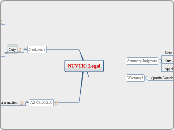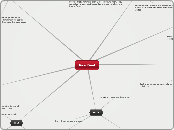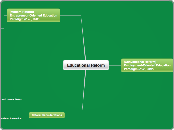NUVUK: Legal
Warranty?
Spearin Doctrine
AS 09.50.250
A person or corporation having a contract, quasi-contract, or tort claim against the state may bring an action against the state in a state court that has jurisdiction over the claim. A person who may present the claim under AS 44.77 may not bring an action under this section except as set out in AS 44.77.040 (c). A person who may bring an action under AS 36.30.560 - 36.30.695 may not bring an action under this section except as set out in AS 36.30.685 . However, an action may not be brought if the claim
(1) is an action for tort, and is based upon an act or omission of an employee of the state, exercising due care, in the execution of a statute or regulation, whether or not the statute or regulation is valid; or is an action for tort, and based upon the exercise or performance or the failure to exercise or perform a discretionary function or duty on the part of a state agency or an employee of the state, whether or not the discretion involved is abused;
(2) is for damages caused by the imposition or establishment of a quarantine by the state;
(3) arises out of assault, battery, false imprisonment, false arrest, malicious prosecution, abuse of process, libel, slander, misrepresentation, deceit, or interference with contract rights;
(4) arises out of the use of an ignition interlock device certified under AS 33.05.020 (c); or
(5) arises out of injury, illness, or death of a seaman that occurs or manifests itself during or in the course of, or arises out of, employment with the state; AS 23.30 provides the exclusive remedy for such a claim, and no action may be brought against the state, its vessels, or its employees under the Jones Act (46 U.S.C. 688), in admiralty, or under the general maritime law.
Negligent Misrepresentation
subsection .250(3) provides that “an action may not be brought [against the state] under this section if the claim ... arises out of misrepresentation ....” In interpreting this provision, we rely heavily on federal cases interpreting the Federal Tort Claims Act, which also contains a “misrepresentation” clause. P.G. v. State, Dept. of Health and Human Servs., 4 P.3d 326, 335 (Alaska 2000).
Negative Authority
U.S. v. Neustadt, 366 U.S. 696 (1961)
FACTS
HOLDING/REASONING
since Congress employed both the terms ‘misrepresentation’ and ‘deceit’ in s 2680(h), it clearly meant to exclude claims arising out of negligent, as well as deliberate, misrepresentation; and therefore, even assuming that the District Court correctly found that the inaccurate FHA appraisal in this case resulted from a negligent inspection, and that respondents relied upon that appraisal to their detriment,FN12 the claim must nevertheless fail as one ‘arising out of * * * (negligent) misrepresentation.’ Neustadt, 366 U.S. at 701-02.
To say, as the Fourth Circuit did, that a claim arises out of ‘negligence,’ rather than ‘misrepresentation,’ when the loss suffered by the injured party is caused by the breach of a ‘specific duty’ owed by the Government to him, i.e., the duty to use due care in obtaining and communicating information upon which that party may reasonably be expected to rely in the conduct of his economic affairs, is only to state the traditional and commonly understood legal definition of the tort of ‘negligent misrepresentation,’ as is clearly, if not conclusively, shown by the authorities set forth in the margin,FN16 and *707 which there is every reason to believe Congress had in mind when it placed the word ‘misrepresentation’ before the **1301 word ‘deceit’ in s 2680(h). Id. at 706-07.
Positive Authority
JM Mech. Corp. v. United States, 715 F.2d 190 (3d Cir. 1983).
FACTS
Subcontractor on construction project brought action against Department of Housing and Urban Development, the guarantor on bonds, to recover sum of money it had yet to recover from general contractor on project. held that since Government's failure to communicate fact of failure of bonds to subcontractors, while itself giving rise to possible action in misrepresentation, was not essential to subcontractor's claim, subcontractor's factual allegation would be consistent with proof at trial that its injury was caused by Government's negligence in failing to secure replacement performance and payment bonds, and subcontractor had made a valid claim under the Federal Tort Claims Act.
HOLDING/REASONING
The Court limited the applicability of Neustadt by concluding that 28 U.S.C. § 2680(h) (1976) barred an action for recovery under the FTCA only when a party alleged no injury that he would have suffered independently of his reliance on a misrepresentation or an omission. The Court explained that:
Section 2680(h) thus relieves the Government of tort liability for pecuniary injuries which are wholly attributable to reliance on the Government's negligent misstatement. As a result, the statutory exception undoubtedly preserves sovereign immunity with respect to a broad range of government action. But it does not bar negligence actions which focus not on the Government's failure to use due care in communicating information, but rather on the Government's breach of a different duty. Id. 194 (citing Block v. Neal). The Court concluded that only where it appears beyond doubt that the only damages alleged in the complaint were caused by the government's failure to use due care in communicating information, could the complaint be dismissed on the basis of section 2680(h). Id. ... it is now clear that where recovery is sought on the basis of a breach of a governmental duty to perform certain acts, and not on the basis of misstatements or communications made or not made by the government, section 2680(h) may not be invoked to bar the action. The fact that there may be overlap between the tort of misrepresentation and the tort of negligence cannot be used to foreclose assertion of the latter. Id.
Ingham v. Eastern Air Lines, Inc., 373 F.2d 227 (2nd Cir. 1967)
FACTS
Actions against airline and United States for injuries and death of passengers in airline accident. Failure of Federal Aviation Agency approach controller to inform incoming aircraft that visibility had dropped from one mile to three-quarters of a mile violated FAA directive that subsequent weather changes, as necessary, shall be transmitted to aircraft and constituted negligence on part of United States.
RULE/REASONING
when the government undertakes to perform services, which in the absence of specific legislation would not be required, it will, nevertheless, be liable if these activities are performed negligently. Id. 236. the government's reading of the misrepresentation exception is much too broad, for it would exempt from tort liability any operational malfunction by the government that involved communications in any form. Id. 239. Where the gravamen of the complaint is the negligent performance of operational tasks, rather than misrepresentation, the government may not rely upon § 2680(h) to absolve itself of liability. Id.
Block v. Neal, 460 U.S. 289 (1983).
FACTS
FmHA borrower brought action against the FmHA under the Tort Claims Act to recover for defects in home purchased with the loan. The Supreme Court, Marshall, J., held that borrower's claim that defects in the house were partly attributable to failure of FmHA to properly inspect the house during construction did not fall within the misrepresentation exception to the Tort Claims Act.
HOLDING/REASONING
the essence of an action for misrepresentation, whether negligent or intentional, is the communication of misinformation on which the recipient relies. Block, 460 U.S. at 296.
Neal's factual allegations would be consistent with proof at trial that Home Marketing would never have turned *298 the house over to Neal in its defective condition if FmHA officials had pointed out defects to the builder while construction was still underway, rejected defective materials and workmanship, or withheld final payment until the builder corrected all defects. Id. at 296.
But the partial overlap between these two tort actions does not support the conclusion that if one is excepted under the Tort Claims Act, the other must be as well. Neither the language nor history of the Act suggest that when one aspect of the Government's conduct is not actionable under the “misrepresentation” exception, a claimant is barred from pursuing a distinct claim arising out of other aspects of the Government's conduct. Id. at 298.
Negligence
Duty
In actions against a municipality in Alaska, the courts will consider whether a duty exists before addressing immunity questions. Guerrero v. Alaska Housing Fin. Corp., 6 P.3d 250, 254 (Alaska 2000). “The liability of a municipality for the negligent acts and omissions of its representatives will be governed by traditional tort principles. Busby v. Municipality of Anchorage, 741 P.2d 230, 232-33 (Alaska 1987). Whether a duty exists is a question of public policy. Id. The following factors from D.S.W. are considered as a whole when the Alaska courts determine whether a duty exists as a matter of public policy:
[1] The foreseeability of harm to the plaintiff,
[2] the degree of certainty that the plaintiff suffered injury,
[3] the closeness of the connection between the defendant's conduct and the injury suffered,
[4] the moral blame attached to the defendant's conduct,
[5] the policy of preventing future harm,
[6] the extent of the burden to the defendant and consequences to the community of imposing a duty to exercise care with resulting liability for breach, and
[7] the availability, cost and prevalence of insurance for the risk involved.
D.S.W. v. Fairbanks N. Star Borough Sch. Dist., 628 P.2d 554, 555 (Alaska 1981).
“[t]he existence of a duty turns not on the particularized facts of a given case, but rather on the basic nature of the relationship between the parties to the cause of action.” P.G. v. State, Dep't of Health and Human Servs., 4 P.3d 326, 331 (Alaska 2000) quoting M.A. v. United States, 951 P.2d 851, 854 & n. 6 (Alaska 1998)
DSW Factors
Prevalence/Cost of Insurance
Burden to D v. Cost to Public
Policy Preventing Future Harm
Moral Blame
Our cases have ascribed particular significance to the moral blameworthiness of negligence that creates a risk of death or serious personal injury; in contrast, we have ascribed little blameworthiness to ordinary negligence that merely causes economic or purely emotional harm. Mesiar v. Heckman, 964 P.2d 445, 451 (1998).
Proximity
The existence of a duty turns not on the particularized facts of a given case, but rather on the basic nature of the relationship between the parties to the cause of action. M.A. v. U.S., 951 P.2d 851, 854 (Alaska 1998).
Certainty of Injury
Forseeability
This is the single most important criterion for imposing a duty of care. See, R.E. v. State, 878 P.2d 1341, 1346 (Alaska 1994). Obviously, if no harm is foreseeable from the State’s conduct, then no duty was owed. Dinsmore-Poff v. Alvord, 972 P.2d 978, 987 (Alaska 1999).
Court is deciding, as a matter of judicial policy, whether a jury should be permitted to consider whether actions were foreseeable. State v. Sandsness, 72 P.3d 299, 306, n. 41 (Alaska 2003).
for purely economic harm, the identifiable class of plaintiffs must be particularly foreseeable in number, type, and economic expectations. Mesiar v. Heckman, 964 P.2d 445, 450 (Alaska 1998).
Before DSW
In deciding whether a defendant owes a plaintiff a duty of reasonable care, we first determine whether a duty is imposed by statute, regulation, contract, undertaking, the parties' preexisting relationship, or existing case law. McGrew v. State, Dept. of Health and Social Services, 106 P.3d 319, 323 (Alaska 2005).
Summary Judgment
Appellate Standard
De Novo. B.R. v. State, Dept. of Corrections, 144 P.3d 431, 433 (Alaska 2006).
Nuvuk's Burden
unless the moving party points to undisputed facts or admissible evidence establishing a prima facie case entitling it to summary judgment as a matter of law, the opposing party has no obligation to produce evidence supporting its own position. B.R. v. State, Dept. of Corrections, 144 P.3d 431 (Alaska 2006).
A party opposing summary judgment need not prove that it will prevail at trial, but only that there is a triable issue of fact. Alaska Rent-A-Car, Inc. v. Ford Motor Co., 526 P.2d 1136, 1139 (Alaska 1974).
State's Burden
In determining whether summary judgment is proper in a particular case, the trial court's function is limited to determining whether or not a genuine issue of material fact exists. Williams v. Municipality of Anchorage, 633 P.2d 248, 250 (Alaska 1981).
“In ruling on a motion for summary judgment all reasonable inferences from the proofs offered are drawn against movant and viewed in the light most favorable to the party opposing the motion.” Rule 56(c); Id. (citations omitted). Thus, the party seeking summary judgment “has the entire burden of proving that his opponent's case has no merit.”









